Recently Mia and I spent just over a week in western Montana on another camping/photo excursion. It was a trip packed with wonderful birds, breathtaking scenery, colorful characters and almost too much drama for me. We spent two days at Red Rock Lakes National Wildlife Refuge, then four days on the western Montana farm near the Canadian border where I grew up and then spent one night at Red Rocks again on the way home. In this post I’ll include a sampling of photos from the trip in the rough order they were taken.
Canon 7D, 1/1250, f/5.6, ISO 800, EV +1.00, 800 f/4, 1.4 tc
This Long-billed Dowitcher photo was taken at a pond on the refuge that often has many birds of good variety but it’s difficult to get good light at this location.
Canon 7D, 1/2000, f/6.3, ISO 800, EV +0.00, 500 f/4, 1.4 tc
This Least Sandpiper gave me a similar pose as in the previous shot but I liked the head turn and lighting better (even though it made the whites a challenge to expose properly).
Canon 40D @22mm, 1/60, f/14, ISO 500, EV +0.33
Mornings at Red Rocks are often spectacular. Here the sun is just beginning to rise on a layer of ground fog with another layer of low clouds just above the fog.
Roads similar to and much worse than this one were the source of the drama I referred to earlier. On this trip we had a total of four flat tires, most caused by the combination of rocks on the gravel road and the heavy load on my pickup with the camping trailer and all the gear I carry along on these trips. Two of the flats were on the trailer and two on the pickup (I’d actually had a fifth flat on our previous trip up here last month). Believe me, it causes stress when you have a flat and you’re 30 miles of dirt/gravel roads away from the nearest pavement plus another 15 miles to the nearest tire shop. Your only choice is to travel those miles without a spare (or cell phone service) and hope you make it on the same roads that caused the flat in the first place. Since we’ve returned home I’ve purchased new, much heavier duty tires for the pickup and now carry two spares for the trailer. I’ve had enough flat tire angst in remote places!
Canon 7D, 1/1250, f/5.6, ISO 640, EV +0.00, 500 f/4, 1.4 tc
After two days we headed for the farm and found the Great Horned Owls that have been resident there for years now. We had less luck getting close to them this trip, perhaps because they were apparently unsuccessful in raising any youngsters this year so there were only the two adults and they were quite wary. Always a delight to see them and know that they’re still there though.
Canon 7D, 1/2500, f/6.3, ISO 640, EV +0.67, 500 f/4, 1.4 tc
I owe this shot to Mia. I had barely awakened from a late afternoon siesta in the camping trailer when I heard Mia (who was outside without her camera) yell, “quick, get your camera!”. When she says something like that I know to do it and ask questions later so that’s just what I did. When I stepped outside still half asleep she was pointing to the north at an approaching Ferruginous Hawk. Typically they won’t come in very close but this one did and I got off a few shots. This species has been very difficult for me to get good photos of so I was delighted to get this one. Thanks Mia!
Canon 7D, 1/500, f/5.6, ISO 640, EV -1.33, 500 f/4, 1.4 tc
One of the dirt roads on the farm crosses a creek that has a few muskrats. While on the small bridge we looked down to see this one in the shade on the west creek bank. In my experience it’s not often you see them mostly out of the water so I took a few shots even with the challenging light.
Canon 7D, 1/160, f/7.1, ISO 640, EV +0.33, 500 f/4, 1.4 tc
An adult and a kit (young muskrat). I thought it interesting to see them both in the same image for comparison.
Canon 7D, 1/3200, f/7.1, ISO 500, EV +0.33, 500 f/4
Now to the photographic highlight of our trip. In all of my many years on the farm I have never, ever seen a Short-eared Owl there. But in the last few years a section of land adjacent to the farm has been placed in the Conservation Reserve Program (CRP), a government program that encourages farmers to take appropriate land out of cultivation and (in this case) replant it to native grasses, fence it to prevent cattle from grazing and to, in effect, allow it to revert to “wildness”. The purpose of the program is mostly twofold – to improve stream and land quality by reducing erosion and to promote an increase in native wildlife.
I was on my way back to the farm after going to town to have another (yes another!) flat tire fixed when voila! – there it was, a Short-eared Owl on one of the fence posts bordering the CRP land and next to the gravel road. I couldn’t have been more excited. Naturally I didn’t have my camera with me so I didn’t get any shots that day but we made many trips back over the last two days we were there to look for it. We saw it and its mate several times but never got close until the evening before we were to leave.
In this shot I had removed my tc and changed my settings in anticipation of a take-off that just didn’t happen.
Canon 7D, 1/320, f/7.1, ISO 400, EV +0.00, 500 f/4, 1.4 tc
I simply could not believe how well and for how long this wonderful owl cooperated with us. We spent several sessions with this bird and it allowed us to be very close (we were shooting from my pickup and it was apparently used to vehicles). It dozed, preened, stretched and generally posed for us for well over an hour and a half. Much of the time it wasn’t very animated but as the evening wore on the angle of the sun changed and the light became warmer giving us interesting variations of light and shadows on the bird.
Canon 7D, 1/500, f/8, ISO 500, EV +0.33, 500 f/4, 1.4 tc
One of the poses I liked while preening. As you can see it was very relaxed in our presence.
Canon 7D, 1/250, f/8, ISO 640, EV +0.00, 500 f/4, 1.4 tc
This is almost the last shot I took of this owl just as the sun was going down (8:28 pm) on the mountains of Glacier National Park thirty miles to the west. I’ve seldom before photographed a bird in such warm light.
Canon 40D @38mm, 1/160, f/18, ISO 500, EV +1.00
I include this photo to give you an idea of the habitat provided by these mostly native grasses. Virtually all of the rest of this area of Montana is farmland – mostly barley and wheat. Some of it can be seen in the photo at upper right – golden and almost ready to harvest. To say that I’m a fan of the CRP is a massive understatement. Don’t get me wrong – we obviously need the cultivated land too but I’m very grateful for these small pockets of newly formed “wildness” and what they do for wildlife.
Ron


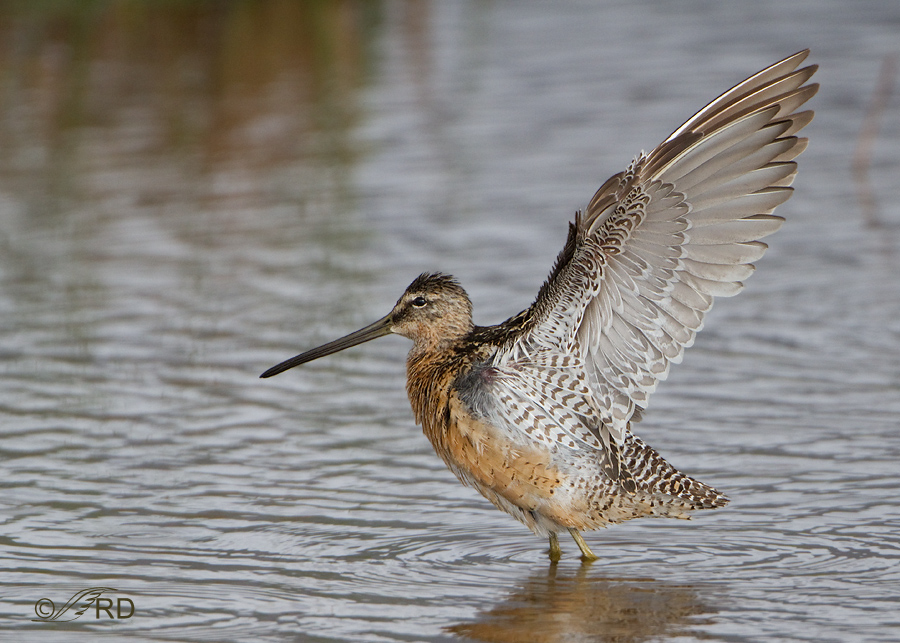
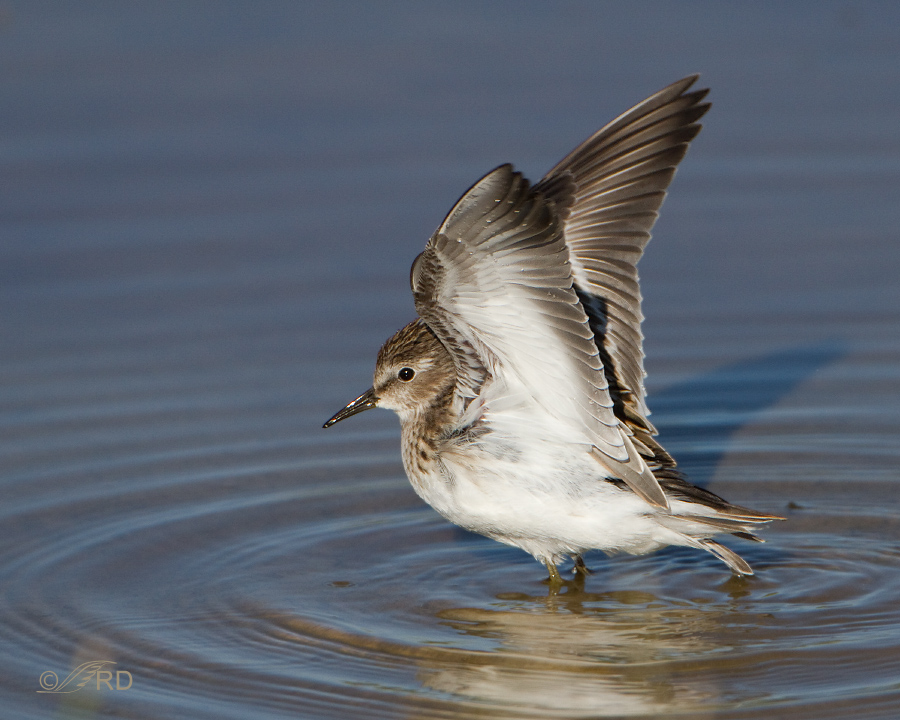
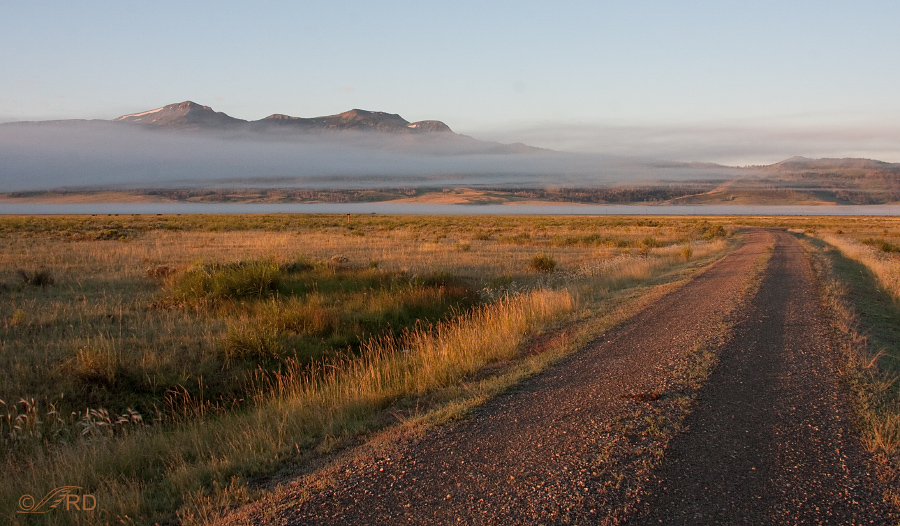
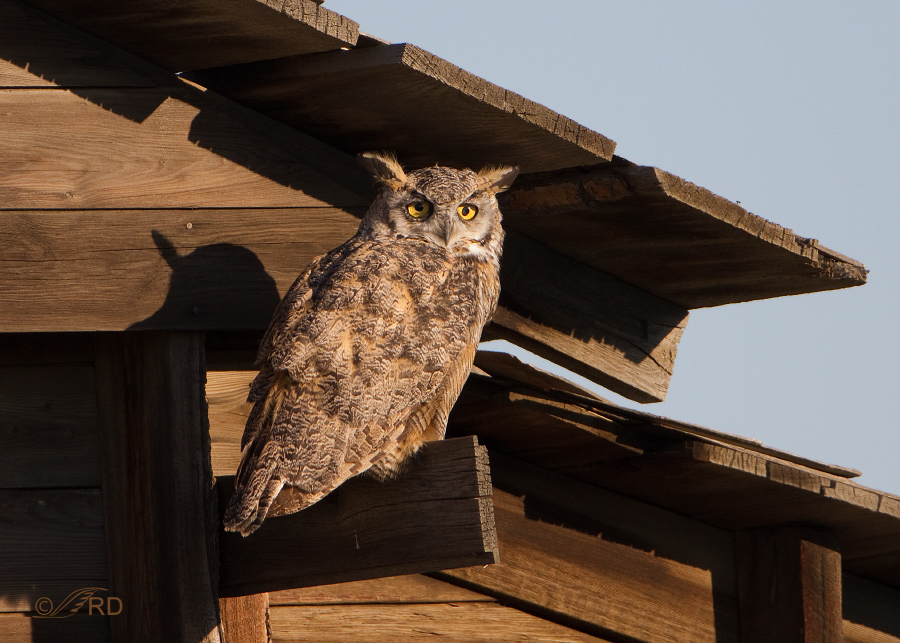
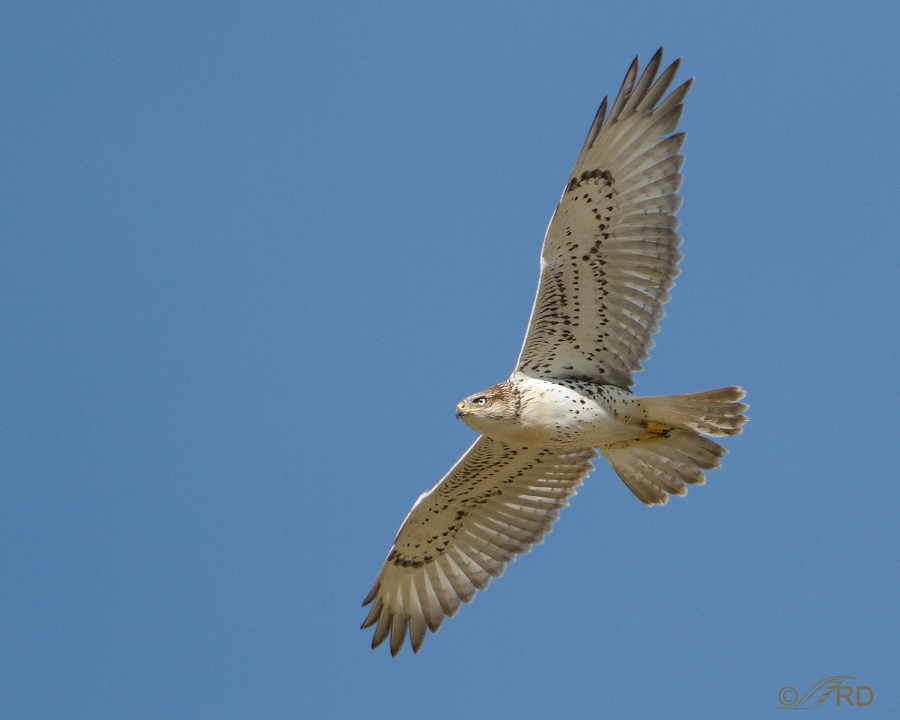


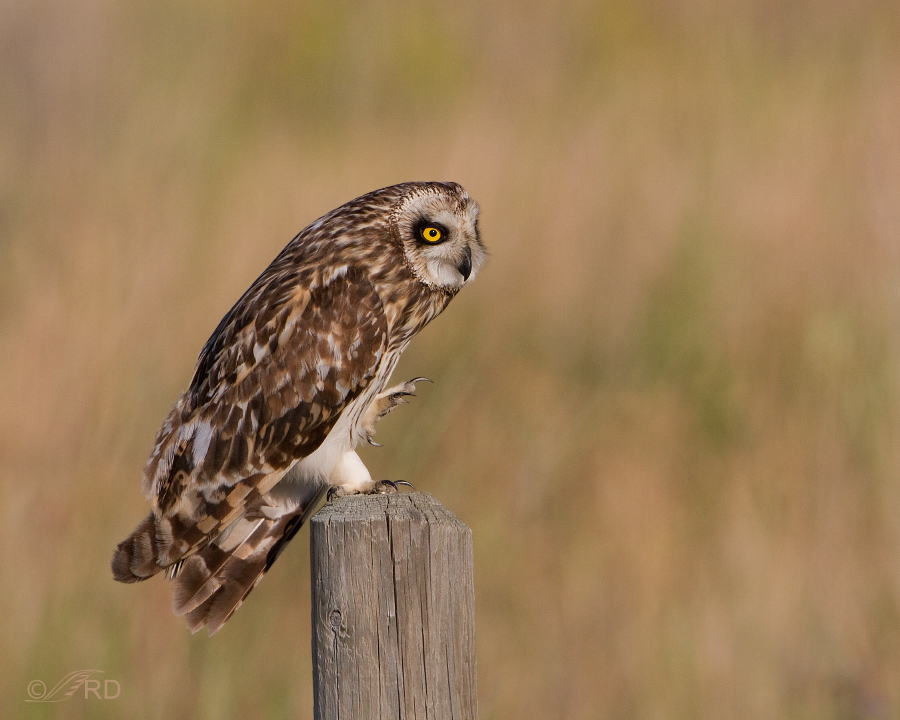
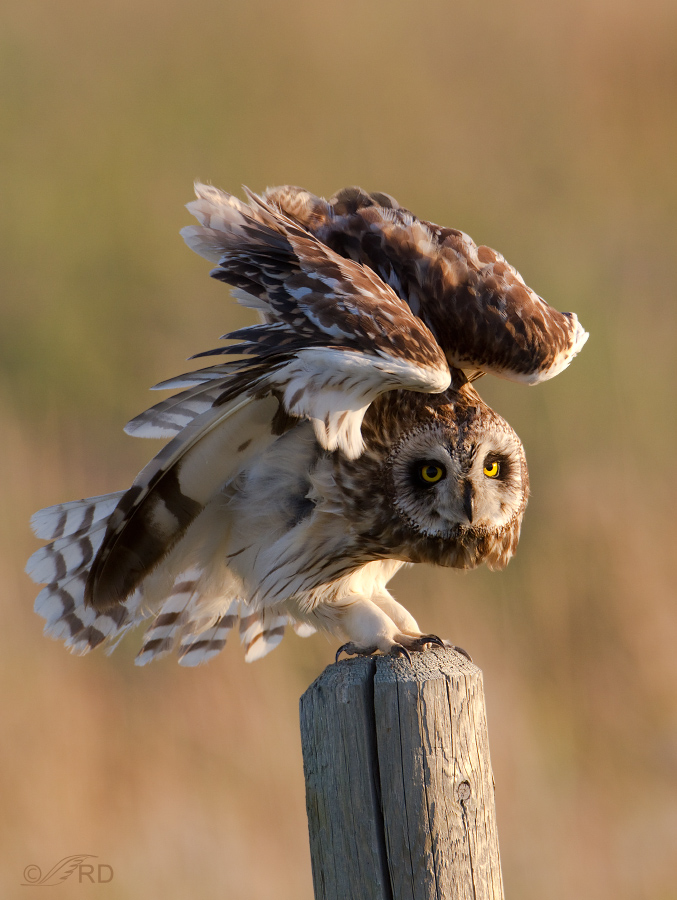

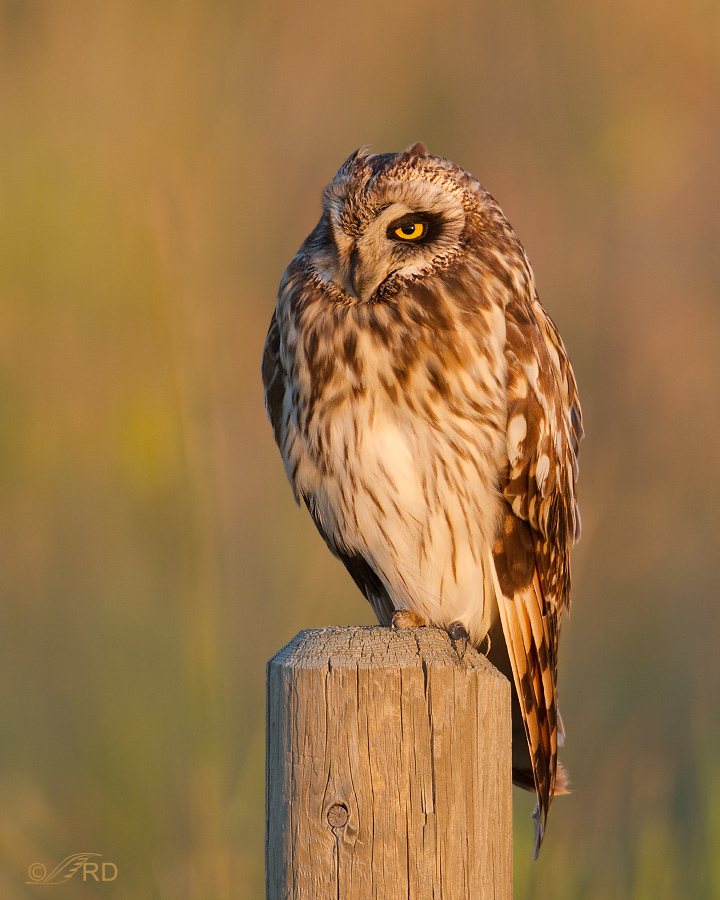
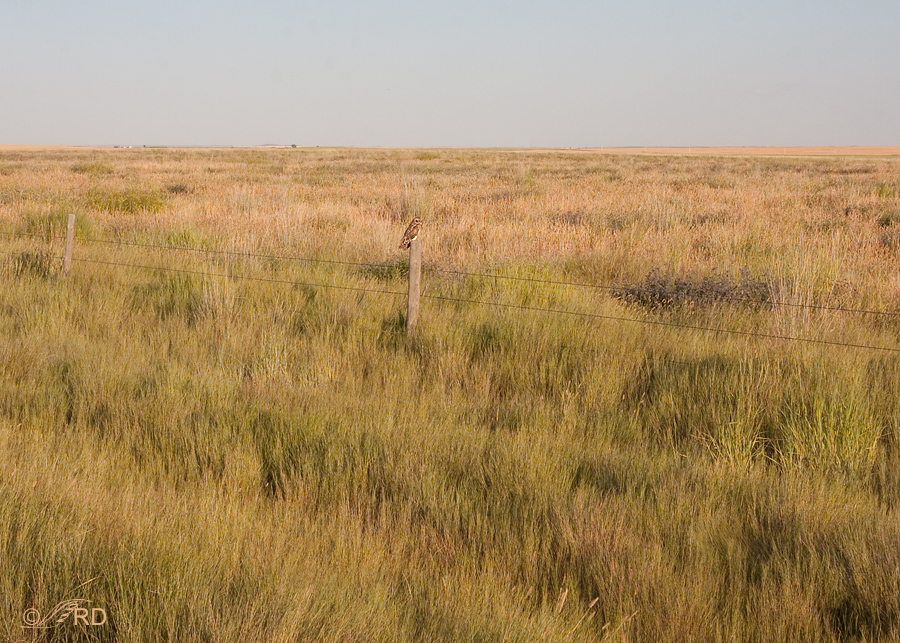
Pfllllllllllt I only chased those cows at the refuge tipsy once!
Consider yourself part of the family Rohn. And it sounds like you’ll be much better behaved than Mia…
Would you two adopt me please. I wont eat much. Sleep under the trailer. speak only when spoken to. All the good kid behaviors.
Besides from the flat tires it appears to have been a good trip. Wonderful Short-eared Owl images in the afternoon light and to be able to spend over an hour photographing one is a cool experience.
They are just aweinspiring. The Ferruginous Hawk took my breath away, and I hadn’t fully recovered when I got to the owl sequence. Thank you so so much.